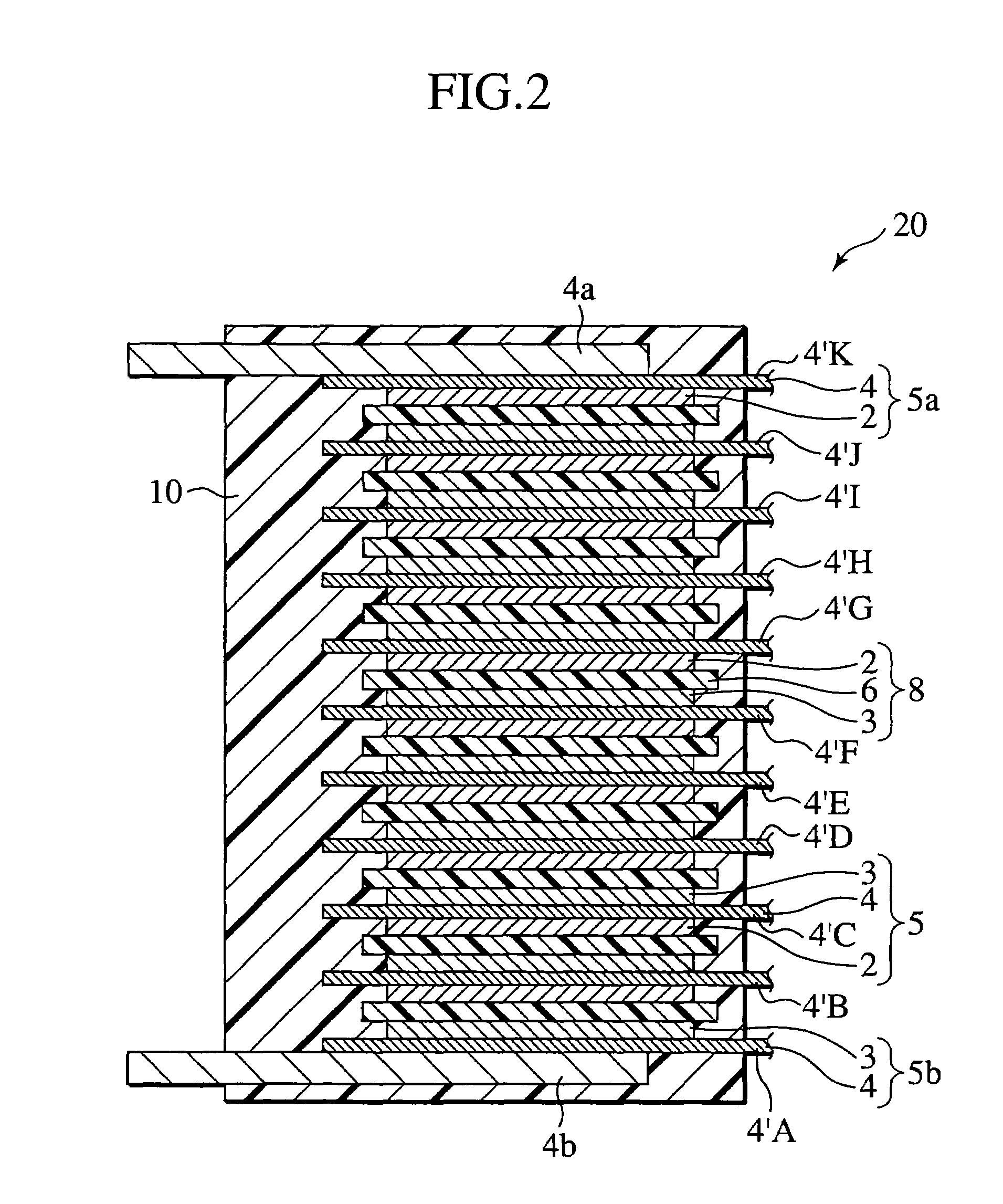Bipolar battery and method for manufacturing the same
- Summary
- Abstract
- Description
- Claims
- Application Information
AI Technical Summary
Benefits of technology
Problems solved by technology
Method used
Image
Examples
example 1
[0214]First, Example 1 is described in detail. The specification or the like is shown in Tables 1 and 2 listed below.
[0215]
[0216]1. Formation of Positive Electrode
[0217]Positive electrode slurry was prepared by mixing materials, including spinel LiMn2O4 [85% in mass ] with a mean grain diameter of 2 μm that was Li—Mn family composite compound as positive electrode material, acetylene black [5% in mass ] as conductive promoter agent, polyvinylidene fluoride (PVDF) [10% in mass ] as binder and N-methyl-2-pyrolidone (NMP) (since NMP is removed by volatilizing when drying the electrode and forms no forming material, an appropriate amount of NMP was added to provide proper slurry viscosity), at the above ratio (indicative of ratio converted in terms of constituents except for slurry viscosity adjustor solvent).
[0218]The above positive electrode slurry was applied onto one surface of a SUS foil (with a thickness of 20 μm), forming a current collector, which in turn was placed in an evacua...
example 2
[0233]In this Example, a bipolar battery was fabricated in the same manner as Example 1 except for matters described below, as shown in Tables 1 and 2 listed below.
[0234]That is, the bipolar battery of this Example has the same structure as that of Example I except in that for the formation of the outermost positive electrode, the above positive electrode slurry was applied onto one surface of a SUS foil (with a thickness of 40 μm), serving as a current collector, which in turn was placed in an evacuated oven and dried at 120° C. for 10 minutes to form a positive electrode with a dried thickness of 20 μm whereupon a SUS foil (with a thickness of 100 μm), serving as a positive electrode tab, is connected (by vibration welding) to a rear surface of the current collector with no positive electrode formed thereon to provide the outermost positive electrode, and in that, for the formation of the outermost negative electrode, the above-described negative electrode slurry was applied onto ...
example 3
[0236]In this Example, a bipolar battery was fabricated in the same manner as Example 1 except for matters described below, as shown in Tables 1 and 2 listed below.
[0237]That is, the bipolar battery of this Example has the same structure as that of Example I except in that graphite with a mean grain diameter of 2 μm forming crystalline carbon material was used as negative electrode material in place of hard carbon with a mean grain diameter of 4 μm forming amorphous carbon material, in that for the formation of the outermost positive electrode, the above positive electrode slurry was applied onto one surface of a SUS foil (with a thickness of 40 μm), serving as a current collector, which in turn was placed in an evacuated oven and dried at 120° C. for 10 minutes to form a positive electrode with a dried thickness of 20 μm whereupon a SUS foil (with a thickness of 100 μm), serving as a positive electrode tab, was connected (by vibration welding) to a rear surface of the current colle...
PUM
| Property | Measurement | Unit |
|---|---|---|
| Temperature | aaaaa | aaaaa |
| Temperature | aaaaa | aaaaa |
| Frequency | aaaaa | aaaaa |
Abstract
Description
Claims
Application Information
 Login to View More
Login to View More - R&D
- Intellectual Property
- Life Sciences
- Materials
- Tech Scout
- Unparalleled Data Quality
- Higher Quality Content
- 60% Fewer Hallucinations
Browse by: Latest US Patents, China's latest patents, Technical Efficacy Thesaurus, Application Domain, Technology Topic, Popular Technical Reports.
© 2025 PatSnap. All rights reserved.Legal|Privacy policy|Modern Slavery Act Transparency Statement|Sitemap|About US| Contact US: help@patsnap.com



